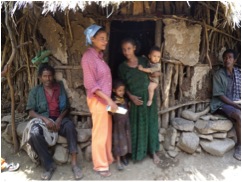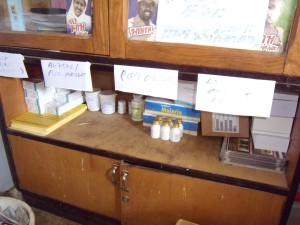QUESTION
Suggestions to control malaria?
ANSWER
This answer is copied from an earlier question asking about strategies for controlling malaria in Africa. The methods below are being used by many health ministries, international agencies and non-governmental organisations to combat malaria all over the world (and not just in Africa).
Currently, malaria control is based on a combination of prevention, education, research and treatment. In more detail:
Prevention: This is arguably one of the keys to sustainably reducing malaria burdens and even eliminating infections. Central to this goal has been the distribution of long-lasting insecticide treated bednets, which prevent people from being bitten by infected mosquitoes while they sleep at night. Unfortunately, some recent research has just been published which suggests that bednets might be contributing to insecticide resistance in mosquitoes, as well as increased rates of malaria in adults due to decreasing natural immunity. As such, it may be that more research is needed in order to determine the most effective and efficient ways of using bednets to prevent malaria infection, particularly in high-risk groups like young children and pregnant women. Another arm of prevention is reducing the number of mosquitoes in an area (called vector control), and thus preventing transmission from occurring at all – this can be achieved through insecticide spraying but also filling in the stagnant pools of water that mosquitoes lay their eggs in. Vector control was highly successful in reducing malaria transmission in the United States and Mediterranean in the years after World War II.
Education: Through education, people living in at-risk areas for malaria transmission can learn about ways to prevent the disease, as well as what to do if they suspect they are infected. Similarly, education is important for travellers visiting malarial areas, so they know the best ways in which to avoid being infected.
Research: Understanding the distribution, factors affecting transmission and the development of new strategies for control and treatment is going to be crucial in the fight against malaria, and particularly in high-burden areas such as Africa. Similarly, scientists are busily looking for new compounds to treat malaria, as well as the ever-elusive malaria vaccine. If such a vaccine could be developed, it would be a huge step forward in the fight against malaria; recently, a study was published which reported the results of the first Phase 3 clinical trial of a malaria vaccine, in African children. The vaccine appeared to confer approximately a 50% level of protection against malaria; while this is a start, it perhaps did not live up to many people’s hopes of a new method for controlling malaria.
Treatment: Hand in hand with treatment comes diagnosis; if a person can have their infection easily, accurately and cheaply diagnosed, then they will be able to access effective treatment more rapidly, thus improving their chances of a swift recovery. As such, countries in Africa are working hard to provide health systems capable of local diagnosis and availability of treatment, so that people don’t have to travel far to have their infections cured.
Taken together, these four strategies are having some success even in the world’s poorest and most malaria-endemic regions, especially in decreasing the number of malaria deaths. Decreasing the overall number of infections will be yet a greater challenge, but one which the world, especially through commitment to the Millenium Development Goals, is dedicated to overcoming.


